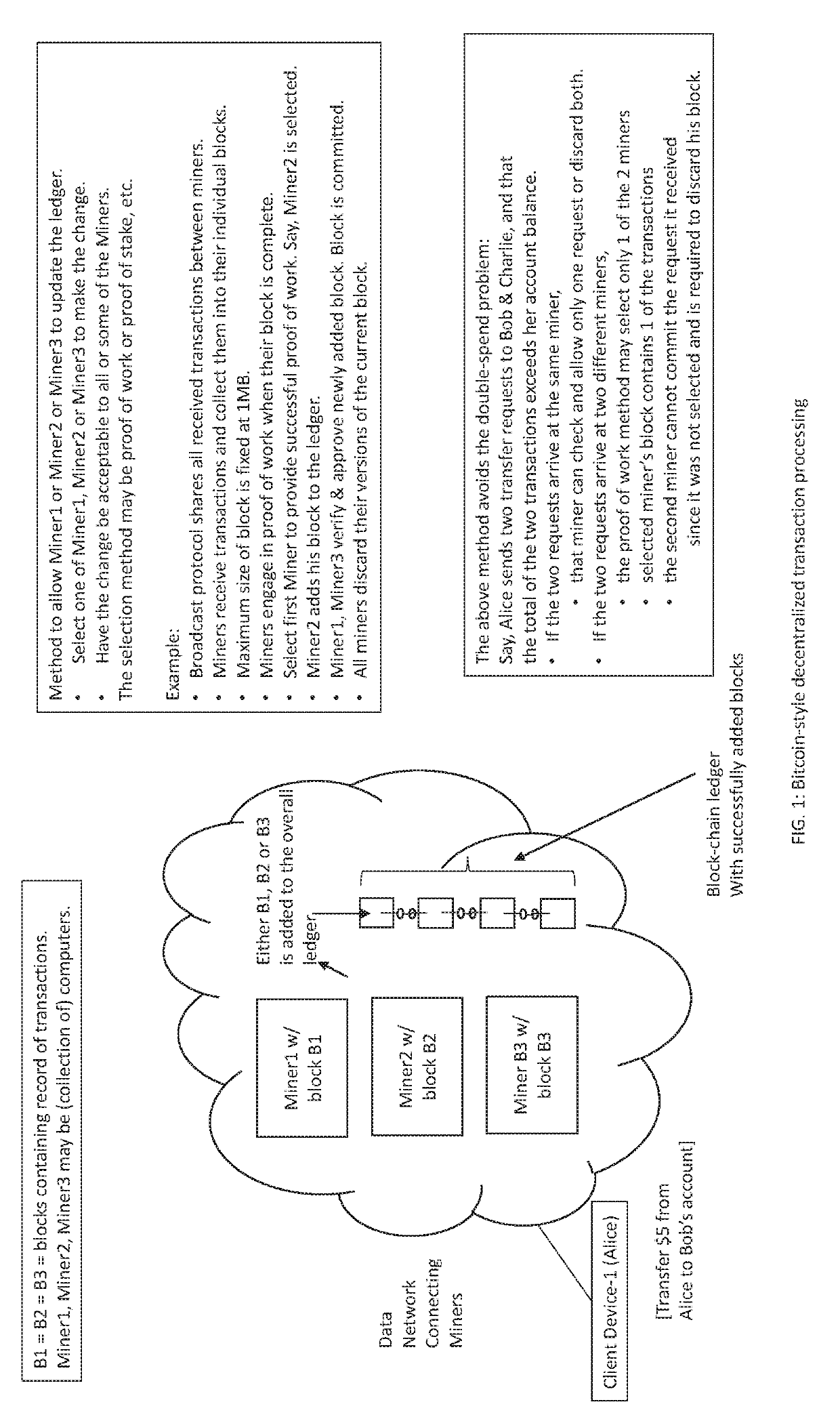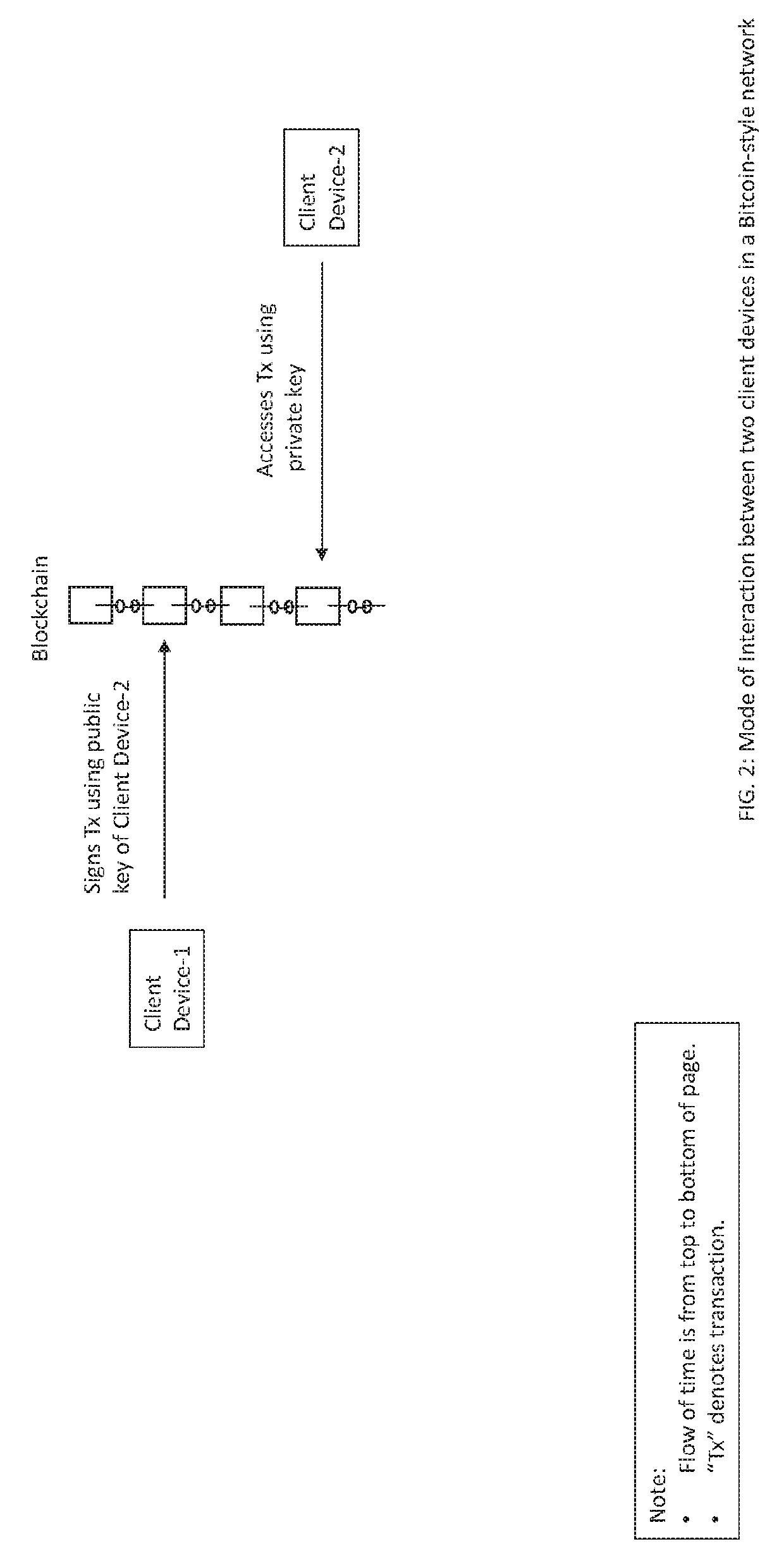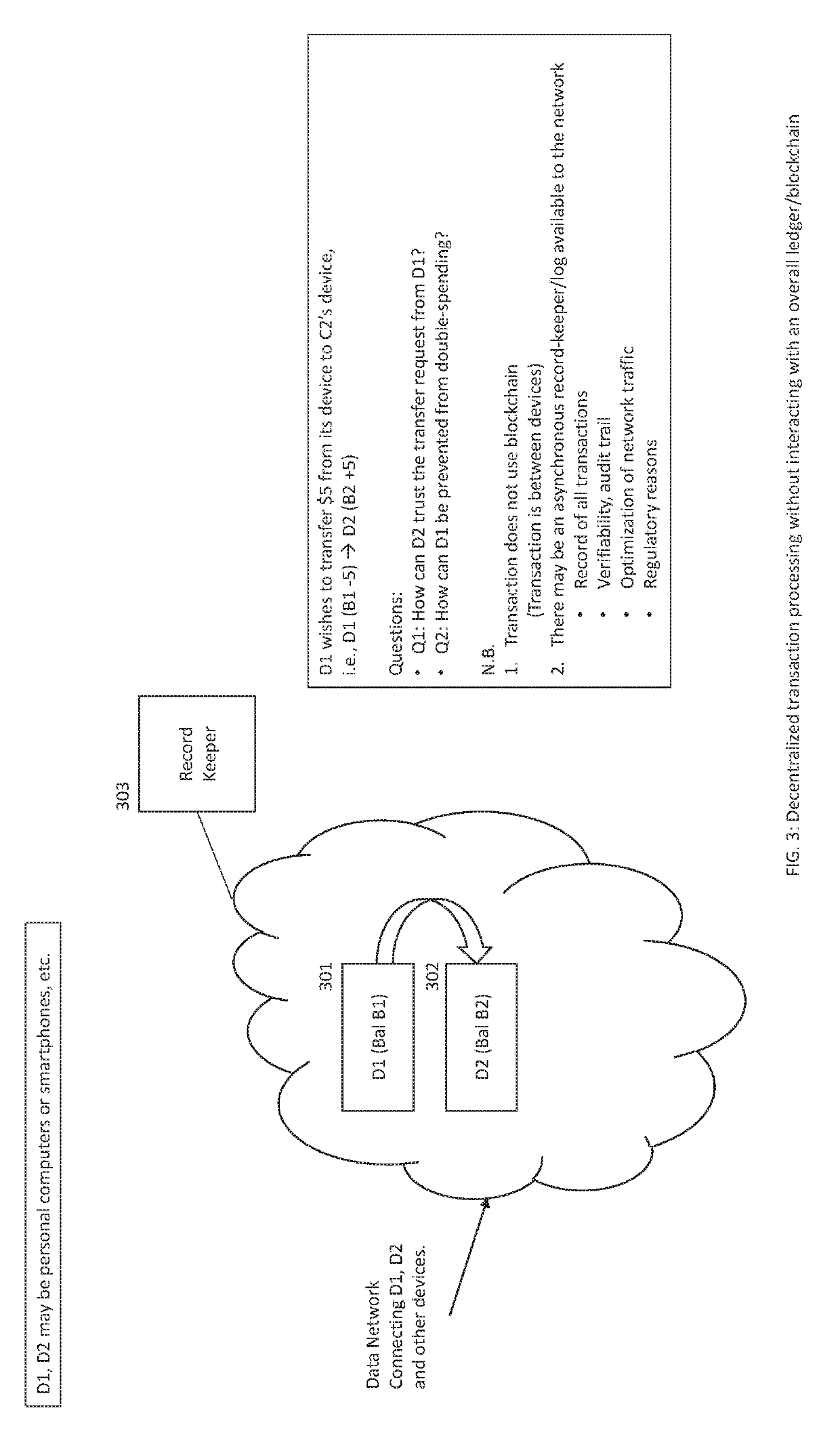User identity and trust models in decentralized and distributed systems
a trust model and user identity technology, applied in the field of user identity and trust models in decentralized and distributed systems, can solve the problem and achieve the effect of quite low transaction throughput ra
- Summary
- Abstract
- Description
- Claims
- Application Information
AI Technical Summary
Benefits of technology
Problems solved by technology
Method used
Image
Examples
embodiment b
[0281][Embodiment B]: To effectuate transaction 25200 (cf. FIG. 25), we proceed as shown in FIG. 27. Client device “A” requests (101) formation of a mining group, MG. Illustrative criteria that may be used to select the members of the mining group MG has been discussed above in connection with the Group Formation Method. One device is selected (102) from the group, MG. The method of selection has been described above. Let the selected device be designated as “device X”.
[0282]Client device “A” initiates a transaction (103) Tx(1) with the device X. We may refer to this as the “first leg” of the transaction. Device X requests (104) an atomic update of the ledger 27600 to record all elements (e.g., proofs, data, tokens) of the transaction from client device A to device X.
[0283]Continuing with embodiment B, we turn to the second leg of the transaction (cf. FIG. 28). Device X initiates a transaction (101) with client device “B”. At the conclusion of the transaction, device X requests (102...
embodiment c
[0284][Embodiment C]: To effectuate transaction 26200 (cf. FIG. 26), we proceed as shown in FIG. 29. Client device “A” requests (101) formation of mining group MG. The group is formed using the group formation method described above. A member of the group is selected (102) using the member selection method described above. Let the selected member device be designated as “X”. Next, the client device initiates a transaction (103) to the X device, which in turn requests a blockchain update (104) from the group MG′. Recall that MG′ comprises of devices that belonged to the group MG except the device “X”. The group MG′ uses a proof of stake method to select a member that performs the requested update (105) of the blockchain. This completes the first leg of the transaction.
[0285]To complete the second leg of the transaction, we proceed as shown in FIG. 30. Device X initiates a transaction (101) with device “B”. The latter requests a blockchain update (102) from the group MG′. A member dev...
PUM
 Login to View More
Login to View More Abstract
Description
Claims
Application Information
 Login to View More
Login to View More - R&D
- Intellectual Property
- Life Sciences
- Materials
- Tech Scout
- Unparalleled Data Quality
- Higher Quality Content
- 60% Fewer Hallucinations
Browse by: Latest US Patents, China's latest patents, Technical Efficacy Thesaurus, Application Domain, Technology Topic, Popular Technical Reports.
© 2025 PatSnap. All rights reserved.Legal|Privacy policy|Modern Slavery Act Transparency Statement|Sitemap|About US| Contact US: help@patsnap.com



